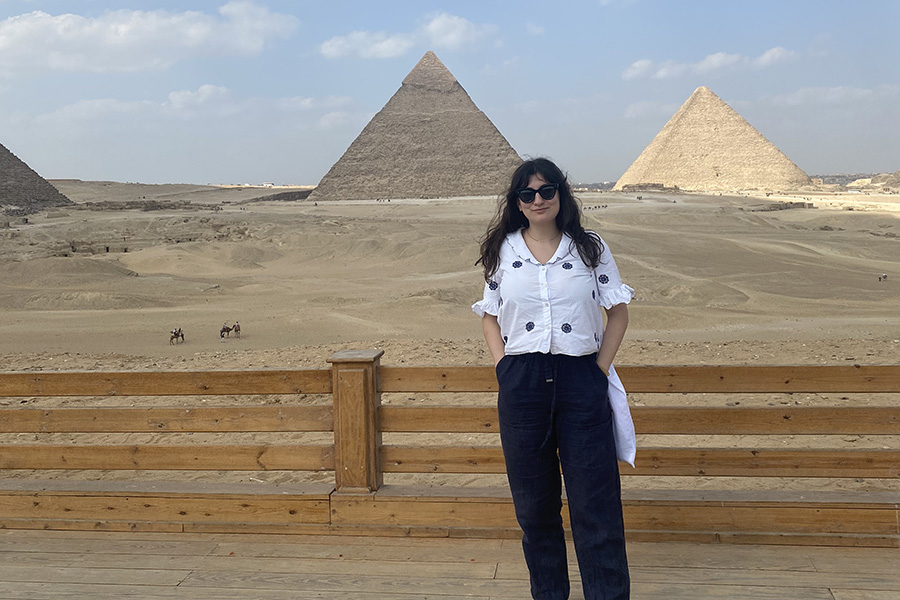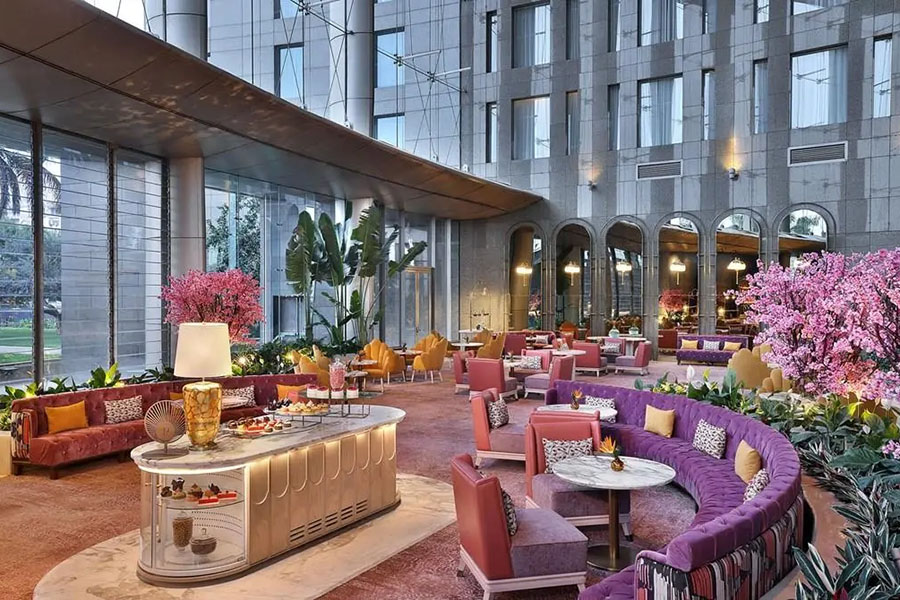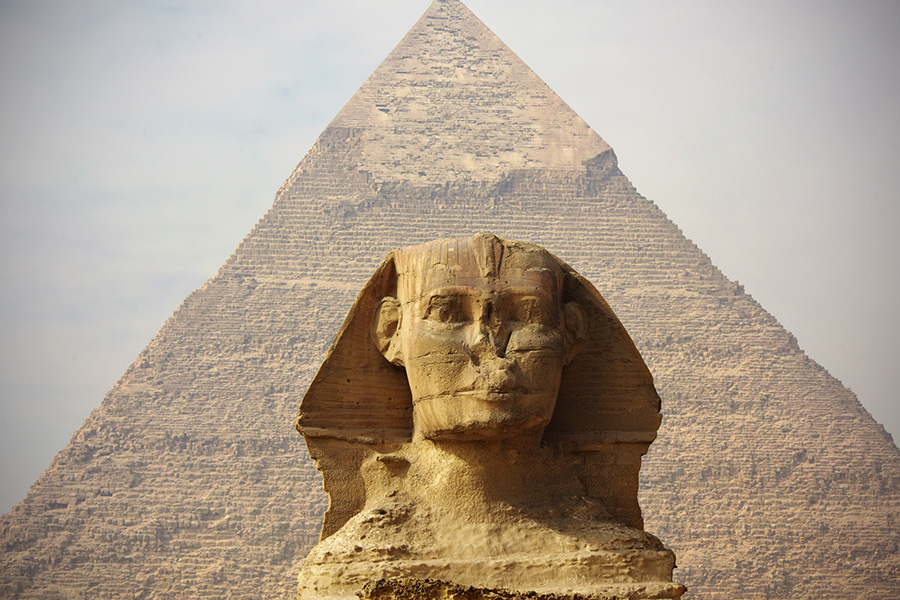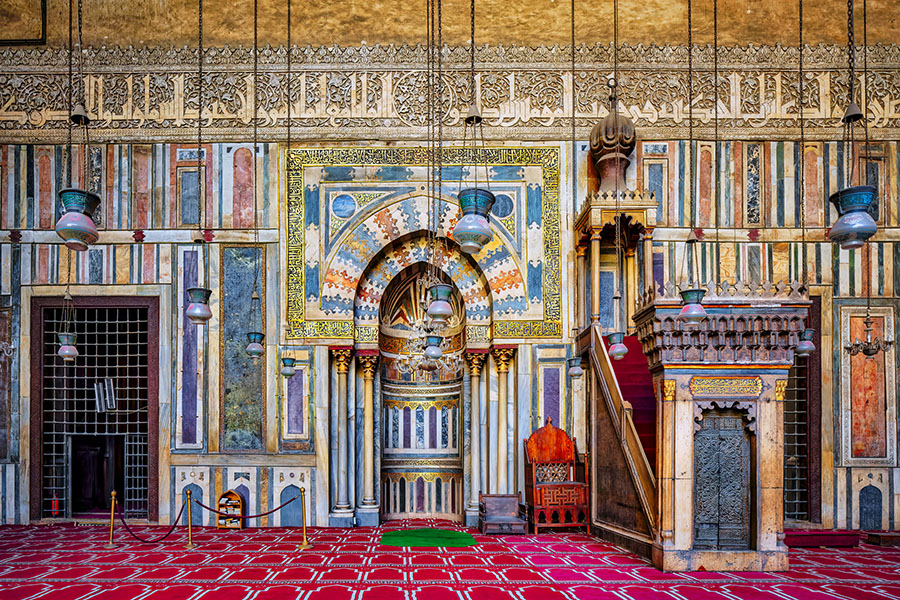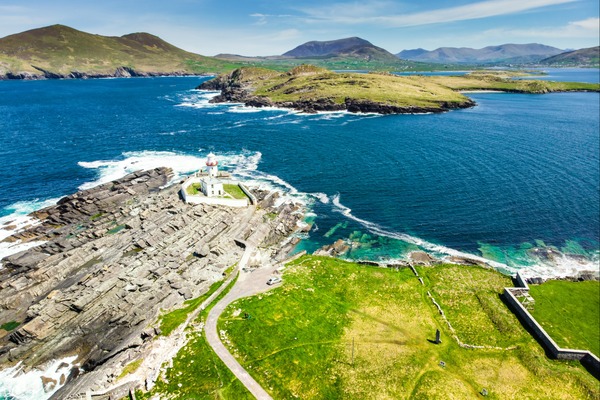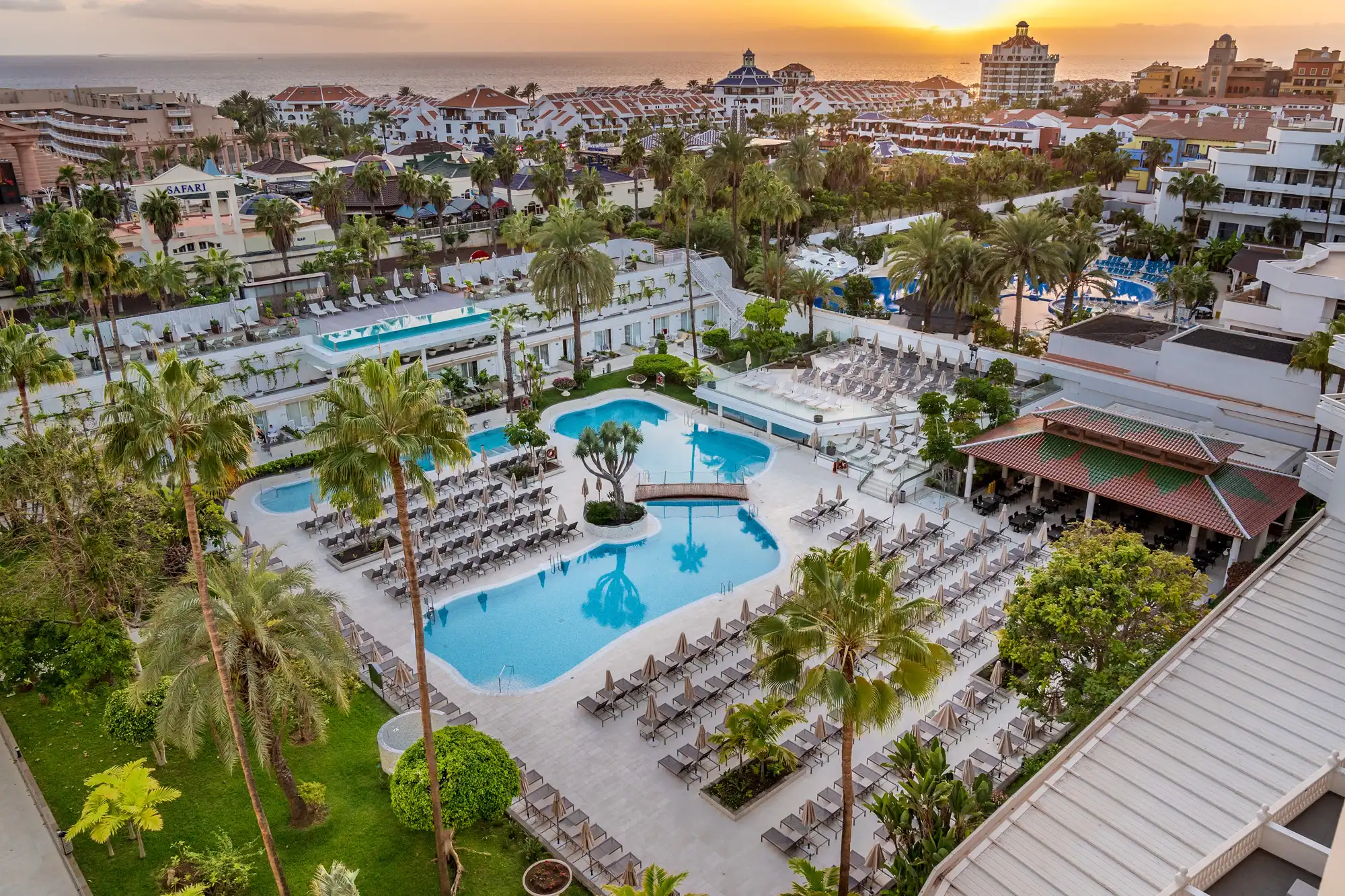‘EasyJet’s new route is my dream weekend come true’
New Cairo packages offered by EasyJet Holidays present an affordable way to experience Egypt’s magnificent capital. Our writer is wowed by a short break exploring the destination’s iconic antiquities

I can barely contain my excitement as I land in Cairo’s Sphinx International airport: it’s the first time I’ve returned to the Middle East since late 2016, when I was living in Amman while studying Arabic at university.
As I step out of the plane and catch a whiff of the springlike air, I realise how much I have missed the region, its food and culture, and how happy I am to be able to experience it all again.
Last autumn easyJet launched a brand-new route from Luton to Sphinx airport, near Giza, to the west of Cairo, flying three times weekly, year-round. With packages starting from £365pp for three nights, including a four-star hotel on a room-only basis, flights and transfers, it’s an affordable way for your clients to plunge themselves into ancient history – which, if they are anything like me, is essentially a dream long weekend come true.
My fellow travellers and I whizz through airport security to meet our chaperones for the next three days: Mohammad Hamdy, easyJet holidays’ destination rep and Dr Tarek Sarhan, our tour guide.
Mohammad is a kind 24-year-old English graduate from Cairo University while Dr Tarek is a former piano player who has been a Japanese, Polish and English tour guide for almost 24 years and was crowned Abercrombie & Kent’s best tour guide last year.
The journey from the airport to our hotel is long thanks to Cairo’s infamous traffic, and I use the time to brush up on my Egyptian with a little help from both Mohammad and Dr Tarek.
As we slowly make our way to the Waldorf Astoria Cairo Heliopolis, we pass by some of Cairo’s most famous landmarks: Qasr El Nil Bridge, a 1931 swing bridge which connects the two banks of the Nile; Cairo Opera House, a gift from Japan after the old opera house was destroyed by a fire in 1971; and Tahrir Square, which rose to prominence as the focal point for the Egyptian Revolution of 2011.
Arriving at the hotel I am starstruck by its size and luxurious design. Built in 2005 and renovated just last year when taken over by Waldorf Astoria, it’s a convenient base for both business and leisure travellers, fitting perfectly with the overall vibe of Heliopolis – one of Cairo’s poshest neighbourhoods and home to several embassies and the presidential palace.
The hotel has 250 rooms, all extremely spacious and tastefully decorated, as well as a fitness centre, a business centre and four different restaurants. It also boasts an outdoor swimming pool and spa, which is set to reopen soon once renovation works are complete.
The next morning it’s time to explore – our first stop is the Egyptian Museum in Cairo, the oldest archaeological museum in the Middle East, spanning more than 5,000 years of ancient history all the way back to 4,000 BC.
The museum has the largest collection of Pharaonic antiquities in the world, housing more than 170,000 artefacts – including a copy of the Rosetta Stone and the statue of legendary pharaoh Ramses II as child protected by Horus, the sun god.
The Egyptian Museum is also the temporary home to Tutankhamun’s treasures, including his sarcophagus and funerary gold mask, which are set to be transported to the Grand Egyptian Museum at a later stage.
After the museum, we enjoy lunch with a view at Nine Pyramids Lounge, the area’s first restaurant, before heading to the cornerstone of our visit – the Pyramids and the Sphinx.
Dr Tarek explains the history of this elaborate burial place, dwelling specifically on the Great Pyramid – also known as Cheops’ Pyramid – and the Sphinx – built by pharaoh Chephren more than 4,500 years ago.
Also known as mir (‘the god’s house’ in hieroglyphic), Cheops’ Pyramid housed the pharaoh’s body and kept it safe, as ancient Egyptians believed kings would become gods in the afterlife and therefore needed an adequate burial chamber to guarantee the safe passage to the next world.
Meanwhile, the Sphinx represents pharaoh Chephren, Cheops’ son, as the mythical creature – half-man, half-lion. One of the world’s biggest statues, the Sphinx is missing its nose – there are several theories out there to explain why, from warfare to natural erosion, yet not one is definitive. “It certainly wasn’t a cannonball fired by Napoleon’s solders,” Dr Tarek says, dismissing one of the more popular myths.
The next day, we continue with a tour of old Cairo and its religious buildings, wandering through a maze of mosques, churches and synagogues.
During the day-long tour, I marvel at the sight of the monumental Mosque and Madrasa of Sultan Hassan and its marble panelling while I’m captivated by the Hanging Church, situated in Cairo’s Coptic Quarter.
Built in the 7th century on top of a Roman fortress, the church contains 110 of the most sacred icons in the Orthodox Church – including that of the Egyptian Mona Lisa.
“It’s like the Mona Lisa, because the eyes follow you whether you go left or right,” Dr Tarek explains.
After a tour of Ben Ezra Synagogue, we head to Cairo’s citadel where I am entranced by the Muhammad Ali Mosque.
Built between 1830 and 1847 by Egypt ruler Muhammad Ali Pasha, the mosque is also known as the Alabaster Mosque for its heavy use of the mineral, both inside and out.
“The mosque looks really beautiful but it’s full of mistakes when it comes to Islamic art,” Dr Tarek explains.
According to the principles of Islamic art, mosques should only be adorned with Quran verses, geometric designs and calligraphy as other decorative forms – especially effigies – are forbidden.
Nevertheless, the public fountain – used by believers to perform their ablutions before entering the mosque – is decorated with images as well as poetry verses.
“This happened because the architect was European and not a Muslim,” he adds with a wry smile.
After an evening spent onboard a Nile river cruiser, boogieing to a mix of Egyptian folk music and the likes of Shakira’s ‘Waka Waka’, we just have time to squeeze in a visit Cairo’s flagship museum, the Grand Egyptian Museum before flying home.
Due to be opened later this spring following a 12-year delay, the Grand Egyptian Museum will become the world’s largest museum dedicated to one civilisation – displaying more than 100,000 artefacts, including the full tomb collection of child pharaoh Tutankhamun.
As I stare in awe at the 36-feet statue of legendary pharaoh Ramses II, I have a sneaking suspicion this won’t be the last time I will come to Cairo.
There will be many more artefacts to discover, statues to contemplate and beautiful buildings to get lost in because – as Dr Tarek is fond of saying – Cairo and Egypt are “a story with no end”.
Book it: easyJet holidays offers three nights at the five-star Waldorf Astoria Cairo Heliopolis on a room-only basis for £870pp including 23kg of luggage per person and flights from London Luton departing 27 April 2024; easyjet.com; tours and activities can be booked through Musement
